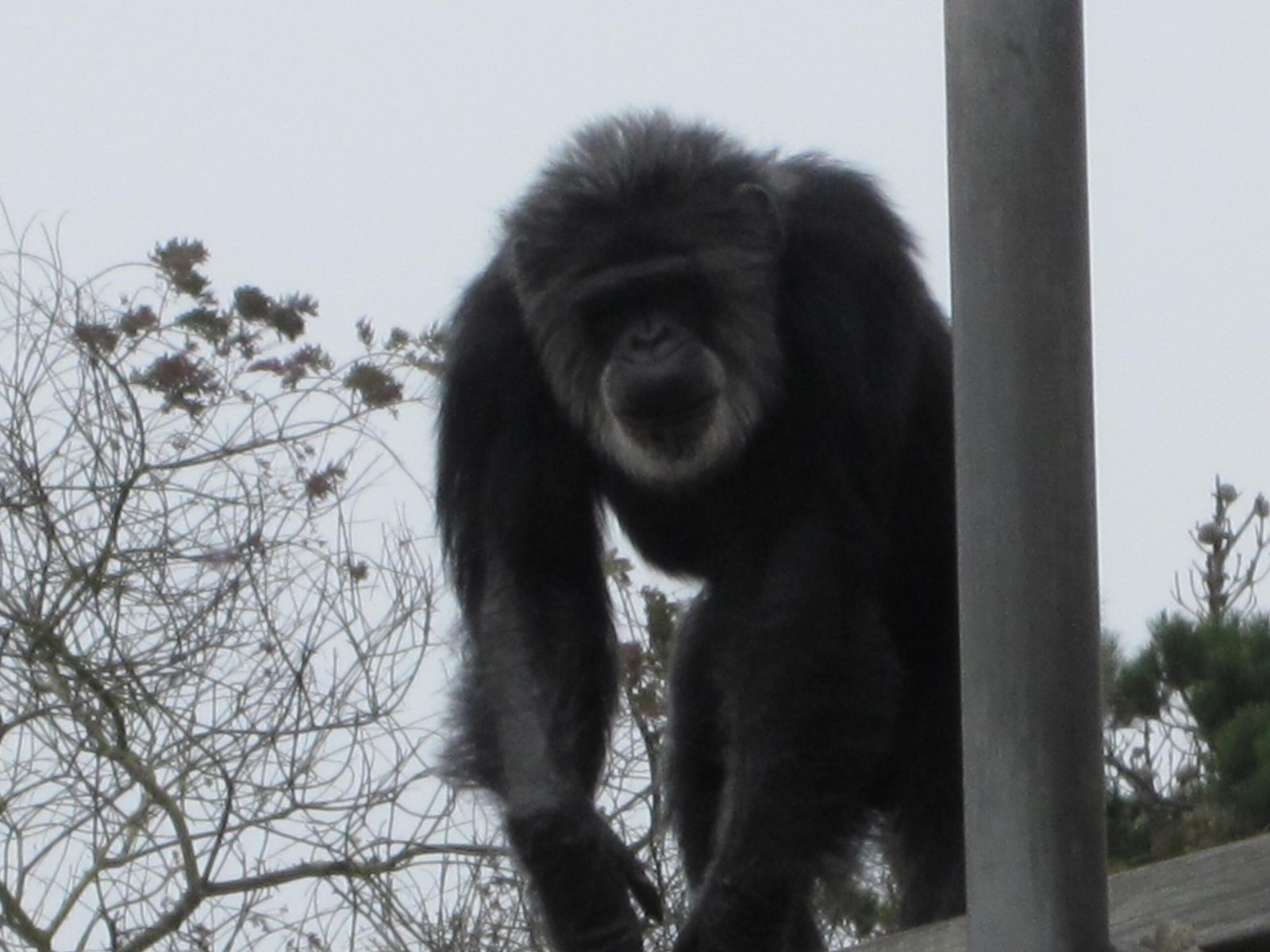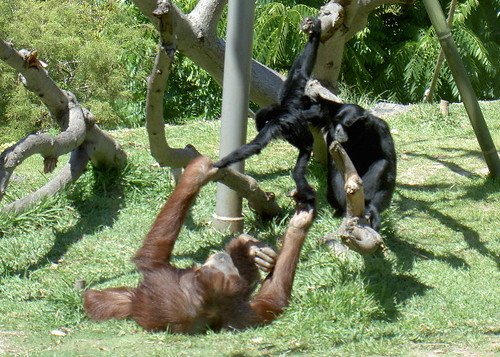Imagine looking into the eyes of a chimpanzee and seeing a flicker of something deeply familiar—a spark that hints at a shared story stretching back millions of years. It’s almost shocking to realize that humans and chimpanzees share about 98% of their DNA, making us each other’s closest living relatives on the planet. Yet, despite this genetic closeness, the worlds we inhabit couldn’t be more different. Our cities rise high, our art stirs souls, and our technology reshapes the very fabric of reality, while chimps swing through rainforest canopies, governed by instincts both ancient and profound. How can a mere 2% of genetic difference create such a vast gulf? Let’s journey through the astonishing similarities and the dramatic differences that set humans and chimps on separate evolutionary paths.
The Genetic Overlap: More Than Skin Deep
At first glance, a 98% genetic similarity sounds almost identical. But what does this really mean? The comparison refers to single nucleotide differences—tiny changes in the genetic code. While 98% of our DNA letters match those of chimps, the way these genes are arranged, regulated, and expressed can change everything. For example, genes might be switched on or off at different times in development, resulting in totally different outcomes. Even small tweaks can have enormous effects, like the difference between a violin and a viola—almost the same, yet producing unique music. These nuanced changes help explain why our brains, bodies, and behaviors diverge so much from our primate cousins.
Brains: The Engine of Human Difference

One of the most astonishing differences between humans and chimps lies in the structure and power of our brains. While chimpanzees are intelligent, capable of using tools and solving problems, their brains are about one-third the size of ours. Humans possess an expanded neocortex, the part of the brain responsible for higher thinking, language, and creativity. This leap in brainpower enables us to invent languages, create art, and contemplate the universe. Chimps, by contrast, are limited to simpler forms of communication and social structure. The gulf in cognitive abilities is so vast that no other animal rivals our capacity for abstract thought, storytelling, or scientific exploration.
Communication: From Gestures to Shakespeare

Chimps communicate using a combination of vocalizations, facial expressions, and gestures. They can even learn to use basic sign language or symbols, showing remarkable intelligence. However, human language is a quantum leap beyond this. Our ability to string together words into complex sentences, share ideas about the past and future, and create poetry or humor is unmatched. This linguistic explosion has fueled our ability to cooperate in large groups and transmit knowledge across generations. While a chimp might gesture for food, a human can write an epic novel or deliver a stirring speech that changes the world.
Social Lives: Bonds, Hierarchies, and Culture
Both humans and chimps live in complex social groups, but the nature of these societies is strikingly different. Chimp groups are tightly bound by hierarchies, with dominant males often ruling through alliances, aggression, and displays of strength. Grooming is a social glue, reinforcing bonds and easing tensions. Humans, on the other hand, form intricate social networks that stretch far beyond family or immediate community. We cooperate with strangers, form nations, and develop moral codes. Our cultures are rich tapestries of rituals, art, and shared beliefs, passed down and evolving over millennia.
Tool Use and Technology: Different Leagues
Chimpanzees are famous for their tool use. In the wild, they fashion sticks to fish termites from mounds, crack nuts with rocks, and even use leaves to soak up water. This ingenuity is impressive and once was thought to be a uniquely human trait. Humans, however, have taken tool use to an entirely new level. From the earliest stone axes to the latest smartphones, our species has never stopped inventing. We build cities, fly planes, and send robots to Mars. The ability to imagine, plan, and collaborate on such massive scales is a defining human trait that has no parallel in the animal kingdom.
Walking Upright: The Anatomy of Bipedalism
One of the most obvious physical differences between humans and chimps is the way we move. Chimps are expert climbers, spending much of their time in trees. Humans, however, are built for walking long distances on two legs. This unique adaptation—bipedalism—changed everything. It freed our hands for tool use and carrying food or children, and it may have helped us keep cool in the hot African savannah. Our skeletons, muscles, and even the structure of our feet are all specialized for upright walking, setting us apart from our knuckle-walking relatives.
Faces and Expressions: The Language of Emotion
Both humans and chimpanzees have expressive faces capable of conveying a wide range of emotions. Chimps use facial expressions to communicate fear, aggression, playfulness, and affection within their troops. Humans, however, possess an even greater variety of subtle facial cues. The human face can express complex emotions like embarrassment, pride, or guilt—feelings that shape our social interactions and cultures. Smiles, frowns, and raised eyebrows can convey messages without a single word, weaving a silent language that deepens our connections.
Childhood and Learning: Different Paths to Adulthood
Human children have a much longer childhood than chimps, and this extended period of growth is key to our species’ uniqueness. Chimps reach maturity by about age seven, but human children remain dependent for over a decade. During this time, we soak up knowledge, learn social norms, and develop complex skills. This long, protected learning phase allows for the accumulation and sharing of vast amounts of information, giving rise to culture, science, and technology. It’s a risky strategy, but one that has allowed humanity to flourish in every corner of the globe.
Health and Disease: Shared Vulnerabilities, Unique Risks
Because of our close evolutionary relationship, humans and chimps are susceptible to many of the same diseases, from the common cold to more serious viruses. Medical research often relies on chimps to understand human illnesses, though ethical concerns have shifted this practice in recent years. Despite these similarities, there are striking differences too. Humans suffer from conditions almost unknown in chimps, such as Alzheimer’s disease and certain cancers. These differences are clues that reveal how small genetic changes can have dramatic effects on health and longevity.
Minds of Mystery: Self-Awareness and Empathy
Chimps show remarkable signs of self-awareness—they can recognize themselves in mirrors, mourn the loss of companions, and even show empathy toward others in distress. Yet, the depth and complexity of human self-reflection is unrivaled. We ponder our place in the universe, create stories about our lives, and struggle with existential questions. Our empathy can stretch across continents, motivating acts of kindness for strangers we’ll never meet. The human mind is a landscape of wonders and worries, a testament to the extraordinary journey from our shared ancestor with chimps.
Evolutionary Divergence: The 2% That Changed Everything

Roughly six to seven million years ago, a population of ancient apes split into two paths—one leading to modern chimpanzees, the other to humans. Over time, that 2% of genetic difference accumulated, driven by changes in environment, diet, and social behavior. Small mutations led to big differences, like larger brains or upright posture. This evolutionary divergence reminds us that even tiny genetic changes, given enough time, can carve entirely new destinies for living beings.
Conservation and the Future: Protecting Our Primate Cousins

Chimpanzees, our closest relatives, face perilous threats in the wild. Habitat loss, poaching, and disease have pushed them to the brink in many areas. Their fate is a mirror reflecting our own choices and responsibilities. Protecting chimps means protecting the forests they call home, and ultimately, preserving the delicate web of life on Earth. As we marvel at our similarities and differences, we must also ask ourselves what kind of world we want to create—for us, and for the creatures who share our remarkable lineage.




